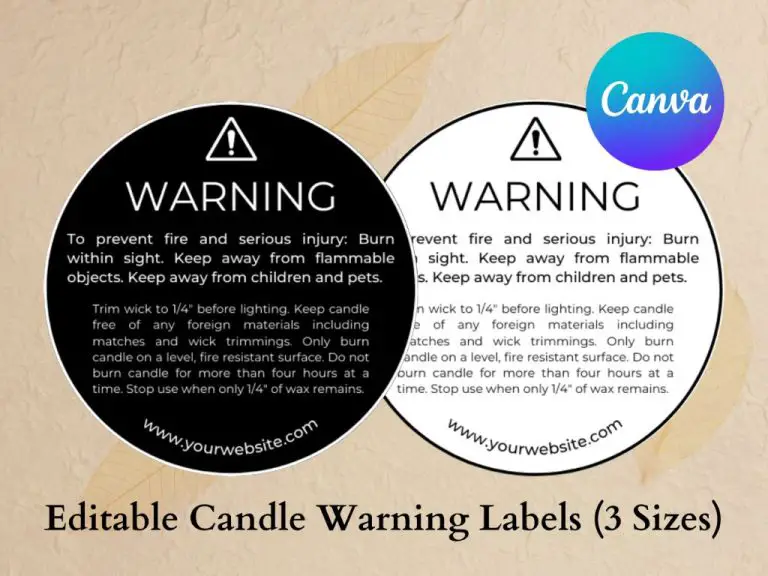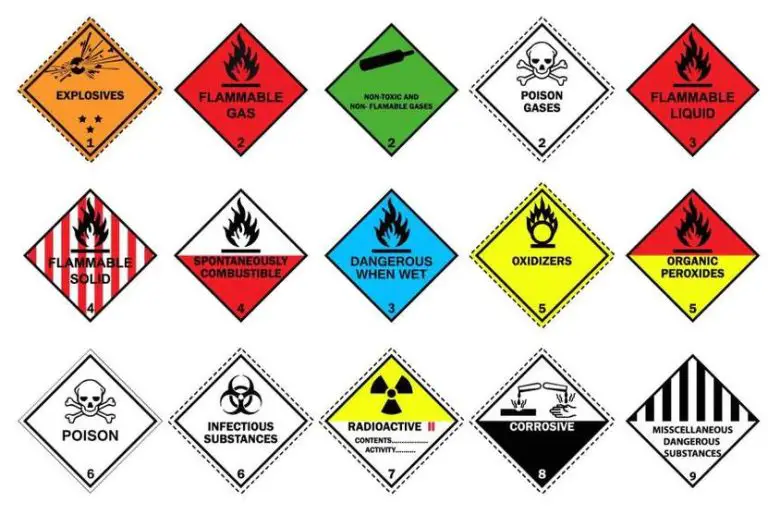How Do You Stop Candle Soot On The Ceiling?
What Causes Candle Soot on the Ceiling?
Candle soot on ceilings and walls is caused by unburned carbon particles released from the candle flame as it burns. These particles are very fine and light, allowing hot air currents from the flame to carry them upwards where they spread out and stick to any available surface as they cool and solidify.
The carbon molecules in the soot adhere easily to textured surfaces like walls and ceilings as the air currents disperse them. Smooth surfaces like glass are less prone to soot buildup because the particles have difficulty sticking. But over time, enough particles will accumulate to leave dusty black soot marks anywhere near the candle flame’s reach.
Burning a candle in an enclosed space increases airflow upwards, driving more soot to the ceiling quicker. Any drafts across the top of the flame also disrupt the burn, releasing extra unburned soot into the air. The longer a candle burns and the more disrupted its flame, the more soot will end up on surrounding surfaces.
Preventing Soot Buildup
The best way to stop candle soot from accumulating on your ceiling is to take preventative steps when burning candles. Here are some tips to prevent excess soot from candles:
Trim the wick to 1/4 inch before lighting to keep the flame small and controlled. Long wicks create taller flames which produce more soot.
Use candles with cotton wicks instead of paper or wood wicks. Cotton burns cleaner while other materials create more smoke and carbon buildup.
Make sure the candle’s flame isn’t too large for the jar or container. The flame should burn steadily and not reach the sides. Overly large flames will generate more soot.
Avoid burning candles continuously for over 4 hours. Long burning times allow more melted wax to pool around the wick which fuels bigger flames. Extinguish candles before the 4 hour mark.
Taking these simple precautions will minimize the amount of soot that reaches your ceiling while enjoying candles. Stopping soot at the source is an easy way to prevent annoying cleanup.
Using Candle Holders and Lanterns
One of the best ways to prevent candle soot from staining your ceiling is to use enclosed candle holders or lanterns. These accessories essentially act as a barrier between the open flame and the surrounding environment.
Enclosed candle holders prevent drafts in the room from directing smoke upwards onto the walls or ceiling. The glass or metal surrounds also catch some of the soot before it can escape.
Additionally, raising the candle higher by placing it in a tall holder or lantern prevents the smoke from being able to reach the ceiling in the first place. The extra height provides more time for the smoke to dissipate before it causes any sooty buildup.
So if you want to enjoy candlelight without worrying about smoke stains above, invest in some covered candle holders or lanterns. Place them on stands or shelves so the flame is elevated off the table or counter. This will go a long way in directing smoke and soot away from your walls and ceiling.
Choosing the Right Candle Location
One of the easiest ways to prevent candle soot from building up on your ceiling is to carefully choose where you place your candles. Here are some tips for ideal candle placement:
Avoid areas with drafts or ventilation systems – Candles placed near vents, fans, open windows etc. will have their smoke and soot carried by air currents, dispersing it around the room. The updraft from ventilation systems can lift candle smoke directly onto your ceiling.
Keep away from corners where smoke accumulates – Inside corners create pockets where smoke can gather and then waft upwards. Placing candles too close to corners gives smoke more chance to rise and cling to your ceiling.
Place on a nonflammable surface – Always keep candles on a sturdy, flat surface made from nonflammable materials. This prevents tipping over and ensures smoke dissipates properly. Avoid surfaces like wood tables where hot wax could damage the finish.
Cleaning Soot Deposits
If you discover candle soot on your ceiling, all is not lost. With a little elbow grease, you can often remove those pesky black marks. Here are some simple cleaning solutions to try:
For light soot that has not had time to really set in, a dry soft cloth or sponge may be enough to gently rub it off. Go slowly and avoid scrubbing too hard. The soot may come off easier than expected.
For more stubborn deposits, try using a mild dish soap or all-purpose cleaner. Dampen a soft cloth or sponge with the cleaner, then wipe the area gently. The surfactants in these cleaners help cut through grease and lift up the stuck-on soot.
Baking soda or toothpaste can also help scrub off tough stains thanks to their gentle abrasive properties. Make a paste by mixing a little water with the baking soda or toothpaste. Apply to the stained area and rub gently with a soft cloth. Rinse thoroughly afterwards.
With some persistence, you can usually remove candle soot from ceilings and restore the surface to its original condition. Just be patient and use mild cleaners and a delicate touch.
Magic Eraser Soot Remover
A magic eraser is made of melamine foam, which is a very porous material that easily lifts off stubborn stains when dampened. To remove candle soot using a magic eraser, follow these steps:
Dampen the magic eraser under running water and squeeze out the excess moisture. You don’t want it to be dripping wet, just moistened.
Gently wipe the magic eraser in a circular motion over the sooty area. The melamine foam will help lift the stuck-on soot off the ceiling.
Rinse the magic eraser frequently as you go to remove the soot it has picked up. This prevents the eraser from becoming dirty and smearing the soot around instead of cleaning it off.
Continue wiping with the freshly rinsed magic eraser until all the soot has been removed from the ceiling. The melamine foam makes easy work of this stubborn staining.
Magic erasers are inexpensive, readily available cleaning tools that can make short work of candle soot on ceilings and other surfaces when used properly. Their gentle abrasiveness lifts off the staining without damaging delicate surfaces.
Vinegar or Lemon Juice
One of the most popular do-it-yourself approaches for cleaning candle soot utilizes weak acids like vinegar or lemon juice. The acidity helps dissolve the greasy black carbon deposits left behind by candle flames.
Simply mix equal parts vinegar or lemon juice with water. Dip a soft cloth into the solution and use it to gently wipe the sooty areas. The acid solution will begin breaking down the stubborn stains. You may need to apply several rounds of wiping before all of the soot is removed.
Test first in an inconspicuous area to ensure the vinegar or lemon juice does not damage or discolor the paint or surface material. As long as you use a light touch and don’t oversaturate the area, this weak acid approach can get your ceiling looking clean again.
WD-40
WD-40 is an effective cleaner and solvent that can help dissolve candle soot. To use it, first shake the can well and spray a light coating over the sooty area. Let it sit for 60 seconds to allow the solvents time to penetrate and break down the residue. Then, wipe it off with a dry soft cloth. The soot should come off easily. Be sure to test WD-40 on an inconspicuous spot first to ensure it doesn’t damage or discolor the surface.
The light lubricants in WD-40 help lift up the sticky soot while the solvents work to dissolve it. Wiping with a dry cloth prevents the oily residue from being reapplied. WD-40 is safe for many surfaces but always check in a small area first. It can be used on walls, ceilings, wallpaper, tiles, grout, and more. Just be sure to protect any nearby objects or surfaces you don’t want sprayed. With some patience and elbow grease, WD-40 can eliminate those unpleasant soot stains.
Hair Spray
One budget-friendly soot remover you likely already have at home is hair spray. The high alcohol content in inexpensive hair sprays allows them to cut through grease and grime with ease. To remove candle soot using this method:
Spray the sooty area liberally with hair spray and allow it to soak for 5-10 minutes. This gives the alcohol time to break down the sticky candle residue. After letting it soak, simply wipe away with a damp cloth or paper towel. The soot should come right off.
Just be sure to use an inexpensive hair spray containing alcohol. Avoid newer formulations labeled as “alcohol-free.” And test on a small area first, as hair spray could potentially dull or stain certain surfaces. But overall it’s an affordable and effective soot removal trick to keep in your arsenal.
Prevention is Better than Cure
The most effective way to prevent candle soot from accumulating on your ceiling is to take preventative measures when burning candles. Here are some tips:
Properly trim candle wicks to 1⁄4 inch before lighting to prevent excess smoke and soot. Always burn candles in holders that catch dripping wax and have the flame at least 3 inches from any surfaces. Place candles away from drafts or frequently opened doors to avoid uneven burning and smoking.
Choose candles made from soy, beeswax, or vegetable oils instead of paraffin or scented candles, which tend to produce more soot. Limit burn times to 2-3 hours and extinguish the flame if it starts to smoke or flicker unevenly. Opening a window can also help ventilate the air while candles are lit.
Taking these simple precautions will minimize the amount of soot that reaches your ceiling and reduces the need for extensive cleaning. An ounce of prevention is truly worth a pound of cure when it comes to candle soot!





